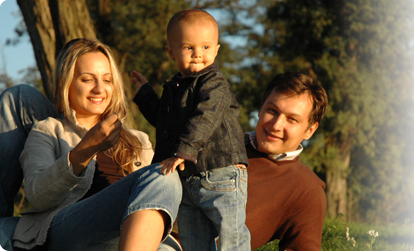Depression
Everyone occasionally feels blue or sad. But these feelings are usually short-lived and pass within a couple of days. When you have depression, it interferes with daily life and causes pain for both you and those who care about you. Depression is a common but serious illness.
Many people with a depressive illness never seek treatment. But the majority, even those with the most severe depression, can get better with treatment. Medications, psychotherapies, and other methods can effectively treat people with depression.
What are the different forms of depression?
There are several forms of depressive disorders.
Major depressive disorder, or major depression, is characterized by a combination of symptoms that interfere with a person's ability to work, sleep, study, eat, and enjoy once-pleasurable activities. Major depression is disabling and prevents a person from functioning normally. Some people may experience only a single episode within their lifetime, but more often a person may have multiple episodes.
Depression is a common but serious illness. Most who experience depression need treatment to get better.
Dysthymic disorder, or dysthymia, is characterized by long-term (2 years or longer) symptoms that may not be severe enough to disable a person but can prevent normal functioning or feeling well. People with dysthymia may also experience one or more episodes of major depression during their lifetimes.
Minor depression is characterized by having symptoms for 2 weeks or longer that do not meet full criteria for major depression. Without treatment, people with minor depression are at high risk for developing major depressive disorder.
Some forms of depression are slightly different, or they may develop under unique circumstances. However, not everyone agrees on how to characterize and define these forms of depression. They include:
- Psychotic depression, which occurs when a person has severe depression plus some form of psychosis, such as having disturbing false beliefs or a break with reality (delusions), or hearing or seeing upsetting things that others cannot hear or see (hallucinations).
- Postpartum depression, which is much more serious than the "baby blues" that many women experience after giving birth, when hormonal and physical changes and the new responsibility of caring for a newborn can be overwhelming. It is estimated that 10 to 15 percent of women experience postpartum depression after giving birth.1
- Seasonal affective disorder (SAD), which is characterized by the onset of depression during the winter months, when there is less natural sunlight. The depression generally lifts during spring and summer. SAD may be effectively treated with light therapy, but nearly half of those with SAD do not get better with light therapy alone. Antidepressant medication and psychotherapy can reduce SAD symptoms, either alone or in combination with light therapy.
-
Bipolar disorder, also called manic-depressive illness, is not as common as major depression or dysthymia. Bipolar disorder is characterized by cycling mood changes—from extreme highs (e.g., mania) to extreme lows (e.g., depression). More information about bipolar disorder is available.
What are the signs and symptoms of depression?
People with depressive illnesses do not all experience the same symptoms. The severity, frequency, and duration of symptoms vary depending on the individual and his or her particular illness.
Signs and symptoms include:
- Persistent sad, anxious, or "empty" feelings
- Feelings of hopelessness or pessimism
- Feelings of guilt, worthlessness, or helplessness
- Irritability, restlessness
- Loss of interest in activities or hobbies once pleasurable, including sex
- Fatigue and decreased energy
- Difficulty concentrating, remembering details, and making decisions
- Insomnia, early-morning wakefulness, or excessive sleeping
- Overeating, or appetite loss
- Thoughts of suicide, suicide attempts
- Aches or pains, headaches, cramps, or digestive problems that do not ease even with treatment.
 Connecticut Institute of Behavioral Health Inc
Connecticut Institute of Behavioral Health Inc
